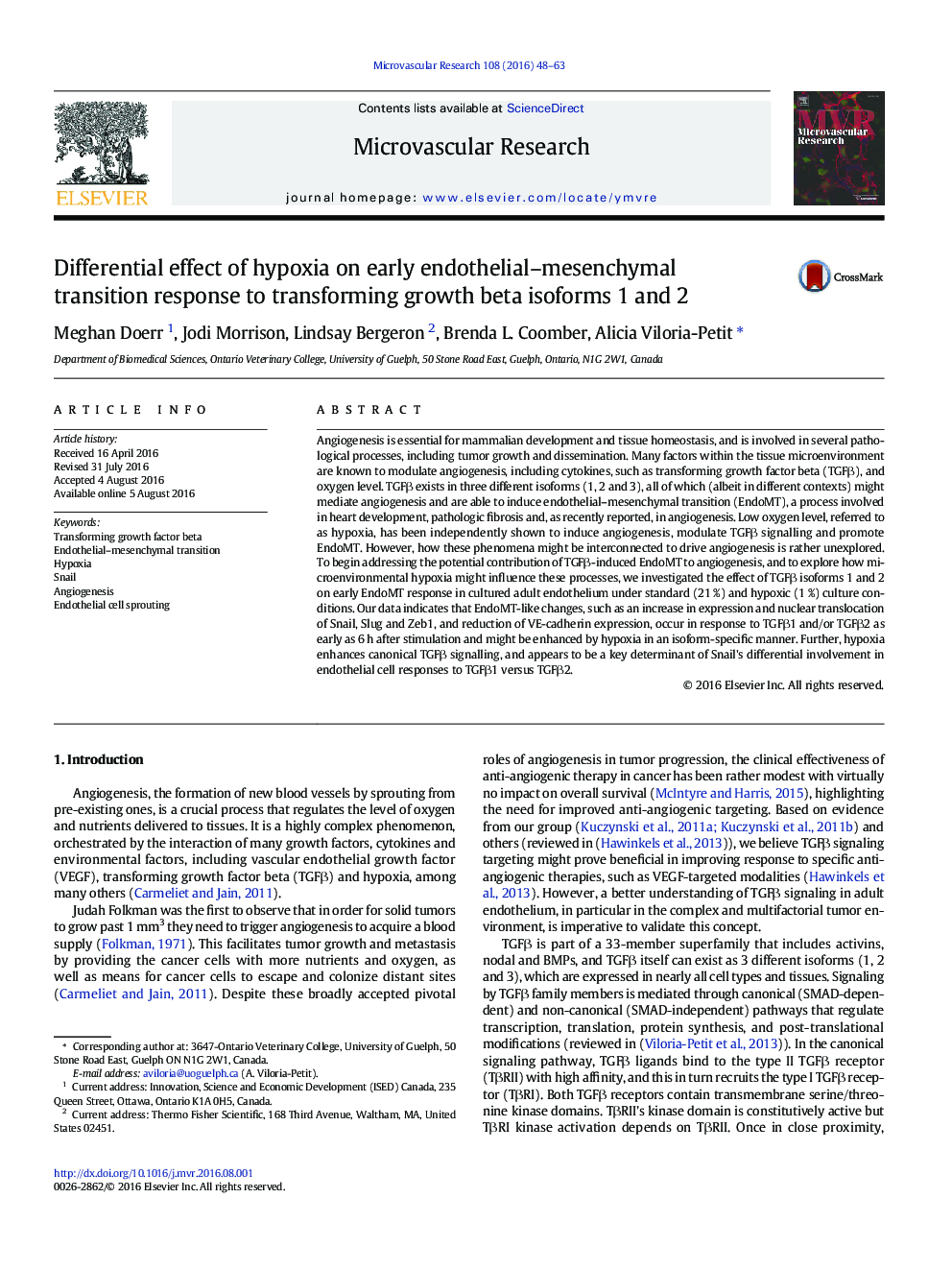| کد مقاله | کد نشریه | سال انتشار | مقاله انگلیسی | نسخه تمام متن |
|---|---|---|---|---|
| 1994656 | 1541276 | 2016 | 16 صفحه PDF | دانلود رایگان |
• Both TGFß1 and TGFß2 isoforms induce early EndoMT under normoxia and hypoxia.
• During this early EndoMT there is a higher ratio of Snail/Slug nuclear accumulation.
• Both TGFß1 and TGFß2 significantly reduce nuclear levels of Zeb2 under hypoxia.
• Hypoxia only enhances nuclear accumulation of phosho-Smad2 in response to TGFß1.
• In hypoxia, Snail facilitates cord formation in the presence of TGFß2 but not of TGFß1.
Angiogenesis is essential for mammalian development and tissue homeostasis, and is involved in several pathological processes, including tumor growth and dissemination. Many factors within the tissue microenvironment are known to modulate angiogenesis, including cytokines, such as transforming growth factor beta (TGFβ), and oxygen level. TGFβ exists in three different isoforms (1, 2 and 3), all of which (albeit in different contexts) might mediate angiogenesis and are able to induce endothelial–mesenchymal transition (EndoMT), a process involved in heart development, pathologic fibrosis and, as recently reported, in angiogenesis. Low oxygen level, referred to as hypoxia, has been independently shown to induce angiogenesis, modulate TGFβ signalling and promote EndoMT. However, how these phenomena might be interconnected to drive angiogenesis is rather unexplored. To begin addressing the potential contribution of TGFβ-induced EndoMT to angiogenesis, and to explore how microenvironmental hypoxia might influence these processes, we investigated the effect of TGFβ isoforms 1 and 2 on early EndoMT response in cultured adult endothelium under standard (21 %) and hypoxic (1 %) culture conditions. Our data indicates that EndoMT-like changes, such as an increase in expression and nuclear translocation of Snail, Slug and Zeb1, and reduction of VE-cadherin expression, occur in response to TGFβ1 and/or TGFβ2 as early as 6 h after stimulation and might be enhanced by hypoxia in an isoform-specific manner. Further, hypoxia enhances canonical TGFβ signalling, and appears to be a key determinant of Snail's differential involvement in endothelial cell responses to TGFβ1 versus TGFβ2.
Journal: Microvascular Research - Volume 108, November 2016, Pages 48–63
